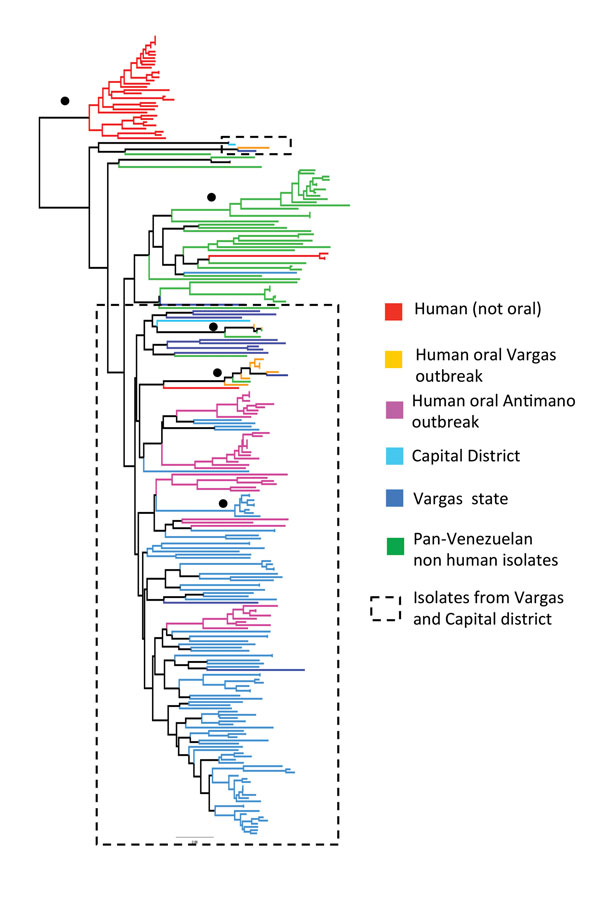Volume 19, Number 7—July 2013
Dispatch
Molecular Epidemiologic Source Tracking of Orally Transmitted Chagas Disease, Venezuela
Figure 1

Figure 1. . Unrooted neighbor joining tree showing genetic clustering among Trypanosoma cruzi isolates from 2 outbreaks of oral disease in northern Venezuela. Based on pairwise genetic distances (1 – proportion of shared alleles) between multilocus microsatellite profiles (23 loci) generated from 246 isolates and clones. Black circles indicate nodes with >60% bootstrap support. Branch color key is shown. Dashed boxes indicate isolates associated with the outbreaks.
Page created: June 17, 2013
Page updated: June 17, 2013
Page reviewed: June 17, 2013
The conclusions, findings, and opinions expressed by authors contributing to this journal do not necessarily reflect the official position of the U.S. Department of Health and Human Services, the Public Health Service, the Centers for Disease Control and Prevention, or the authors' affiliated institutions. Use of trade names is for identification only and does not imply endorsement by any of the groups named above.